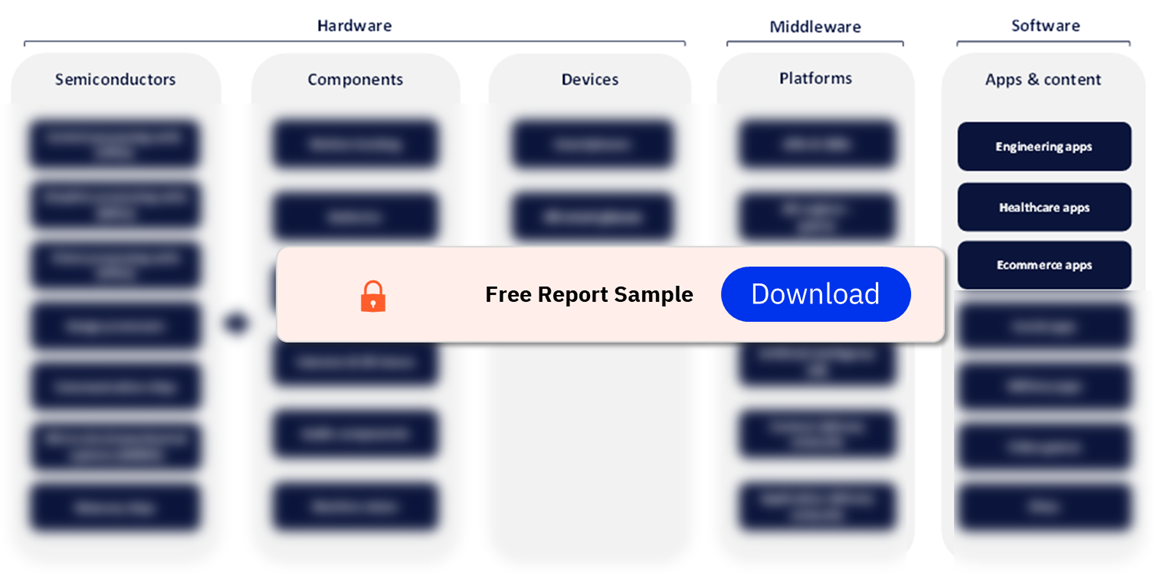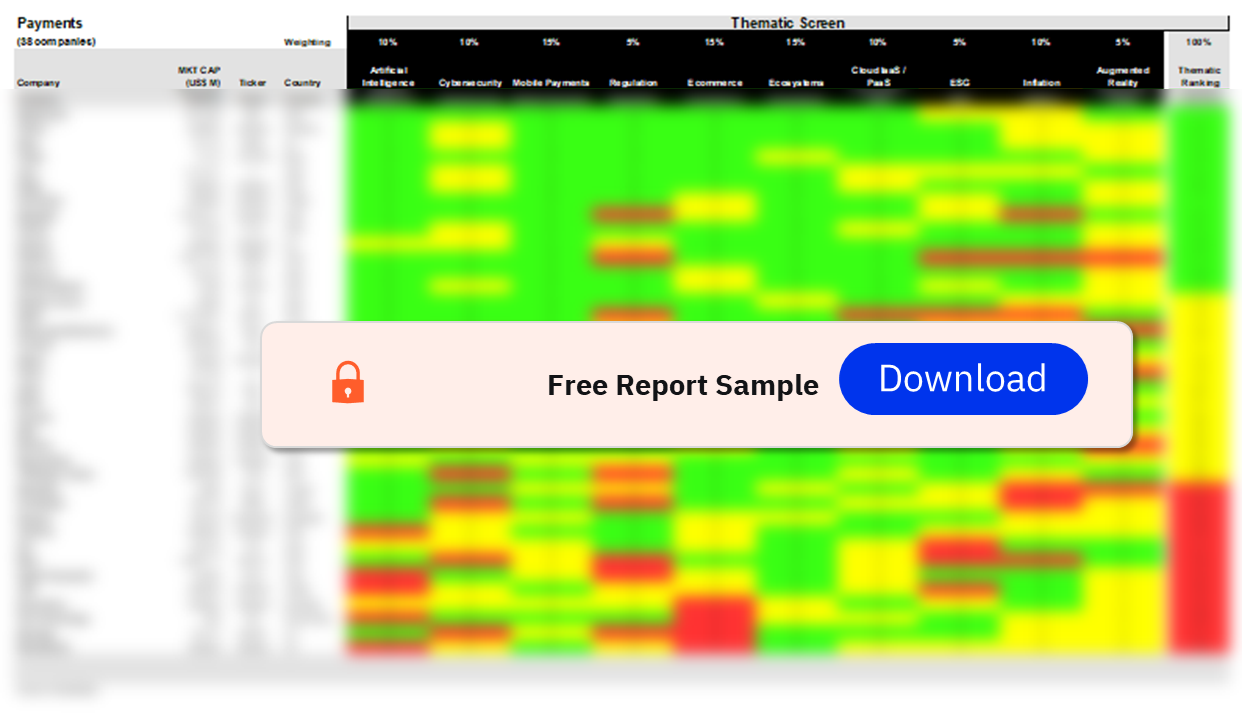Augmented Reality (AR) in Banking – Thematic Intelligence
Powered by ![]()
All the vital news, analysis, and commentary curated by our industry experts.
Augmented Reality (AR) in Banking Thematic Report Overview
Augmented reality (AR) is a technology that allows the user to see the real world overlaid with digital data. Smartphones are the primary device for AR due to advancements in AR capabilities such as advanced spatial awareness, precise positional tracking, and artificial intelligence (AI) tools.
The initial utility-based applications of AR in banking and payments was a purpose-driven ideal centered on integrating AR glasses into payments, such as ATM and branch locators and property visualizers. However, it quickly lost traction as banks now favor QR-code-based AR offerings that reduce barriers to adoption.
The ‘augmented reality (AR) in banking’ thematic intelligence report gives you an in-depth insight into the augmented reality theme and how it will impact the banking sector. It further entails a deep-dive analysis of the industry, including real-life use case studies that showcase how the banking sector has responded to the impact of this theme on their operations. The report identifies the key market trends that will shape the AR theme over the coming years and gives an insight into the market players and the competitive landscape within the theme.
| Report Pages | 67 |
| Regions Covered | Global |
| Value Chain | · Semiconductors
· Components · Devices · Platforms · Apps & Content |
| Leading Adopters in Banking and Payments | · AIB
· American Express · BBVA · BNP Paribas · Capital One |
| Leading AR Vendors | · Alibaba
· Alphabet · ByteDance · Meta · Samsung Electronics |
| Leading AR Vendors in Banking & Payments | · 3rockAR
· Blippar · Plain Concepts · INDE · NFInnova |
| Enquire & Decide | Discover the perfect solution for your business needs. Enquire now and let us help you make an informed decision before making a purchase. |
Augmented Reality (AR) in Banking - Value Chain Analysis
The augmented reality value chain consists of the semiconductors, components, devices, platforms, and apps & content.
Apps & Content: Content is a major area of concern for AR companies. Gaming is a fertile ground for AR but gaming companies struggle to create novel content. Meanwhile, general apps (e.g., maps), e-commerce (e.g., furniture and cosmetic try-ons), and social media (e.g., Snapchat and Instagram filters) are fast becoming growth avenues.
Media houses and e-commerce companies have been early adopters of AR, while healthcare, engineering, and military organizations also use the technology. Microsoft and PTC among others are investing in AR development platforms to support firms through the AR implementation process. Start-ups such as Re’flekt, Scope AR, and Atheer have also joined the race.
Augmented Reality Value Chain Analysis
Buy the Full Report for More Insights into the Augmented Reality (AR) in Banking Value Chain
Download a Free Report Sample
Augmented Reality (AR) in Banking - Leading Companies
A few of the leading augmented reality adopters in banking and payments are:
- AIB
- American Express
- BBVA
- BNP Paribas
- Capital One
A few of the leading companies making their mark within the AR theme are:
- Alibaba
- Alphabet
- ByteDance
- Meta
- Samsung Electronics
A few of the specialist AR vendors in the banking and payments sector are:
- 3rockAR
- Blippar
- Plain Concepts
- INDE
- NFInnova
Buy the Full Report to Know More About the Leading Augmented Reality Adopters in Banking and Payments
Download a Free Report Sample
Application Software Sector Scorecard
At GlobalData, we use a scorecard approach to predict tomorrow’s leading companies within each sector. Our power sector scorecard has three screens: A thematic screen, a valuation screen, and a risk screen.
- The thematic screen ranks companies based on overall leadership in the 10 themes that matter most to their industry, generating a leading indicator of future performance.
- The valuation screen ranks our universe of companies within a sector based on selected valuation metrics.
- The risk screen ranks companies within a particular sector based on overall investment risk.
- The augmented reality (AR) in banking – thematic intelligence report also includes retail banking scorecards.
Payments Sector Scorecard – Thematic Screen
Buy the Full Report to Know More about the Payments Sector Scorecards
Download a Free Report Sample
Scope
• Banks should focus their investments on the edge of the AR value chain, seeking to create experiences through platforms and applications.
• AR content is a key investment area for banking and payments companies. Usually, banks partner with specialist vendors to create AR content centered on specific use cases, such as marketing or visualizing information.
• Tech-forward banking and payments companies have explored the potential applications of AR across several stages of customer and product lifecycles. This ranges from marketing new products to onboarding new customers and boosting the subsequent customer experience.
• Total AR-related patent publications across the banking sector increased from 68 in 2010 to over 2,100 in 2023.
Key Highlights
- Scientific overview of augmented reality (AR) in banking.
- Studies of emerging technological trends and their broader impact on the market.
- Analysis of the various military and civilian hypersonic technologies programs currently under development, their history, and projections on future development initiatives.
Reasons to Buy
- Determine potential investment companies based on trend analysis and market projections.
- Gaining an understanding of the market challenges and opportunities surrounding the Augmented Reality (AR) in Banking theme.
- Understand how spending on augmented reality (AR) in banking will fit into the overall market and which spending areas are being prioritized.
3rockAR
Alibaba
Alphabet
Amazon
Amex
Apple
BBVA
Blippar
BNP Paribas
ByteDance
Capital One
Deutsche Bank
HSBC
INDE
JPMorgan Chase
Magic Leap
Mastercard
mBank
Meta
Microsoft
NF Innova
Niantic
Plain Concepts
Qualcomm
Revolut
Samsung Electronics
Snap
TD Bank
Tencent
Unity
Visa
Vuzix
Table of Contents
Frequently asked questions
-
What are the key components of the augmented reality (AR) value chain?
The key components of the augmented reality (AR) value chain are semiconductors, components devices, platforms, and apps & Content.
-
Which are the leading augmented reality adopters in banking and payments?
A few of the leading augmented reality adopters in banking and payments are AIB, American Express, BBVA, BNP Paribas, and Capital One among others.
-
Which are the leading companies making their mark within the AR theme?
A few of the leading companies making their mark within the AR theme are Alibaba, Alphabet, ByteDance, Meta, and Samsung Electronics among others.
-
Which are the specialist AR vendors in the banking and payments sector?
A few of the specialist AR vendors in the banking and payments sector are 3rockAR, Blippar, Plain Concepts, INDE, and NFInnova among others.
Get in touch to find out about multi-purchase discounts
reportstore@globaldata.com
Tel +44 20 7947 2745
Every customer’s requirement is unique. With over 220,000 construction projects tracked, we can create a tailored dataset for you based on the types of projects you are looking for. Please get in touch with your specific requirements and we can send you a quote.
Related reports
View more Retail Banking and Lending reports












